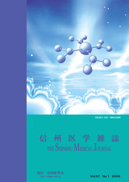Volume 60, Issue 3
Displaying 1-9 of 9 articles from this issue
- |<
- <
- 1
- >
- >|
Foreword
-
2012 Volume 60 Issue 3 Pages 133-134
Published: 2012
Released on J-STAGE: June 20, 2012
Download PDF (175K)
Review
-
2012 Volume 60 Issue 3 Pages 135-142
Published: 2012
Released on J-STAGE: June 20, 2012
Download PDF (716K)
Original
-
2012 Volume 60 Issue 3 Pages 143-148
Published: 2012
Released on J-STAGE: June 20, 2012
Download PDF (199K)
Case Reports
-
2012 Volume 60 Issue 3 Pages 149-156
Published: 2012
Released on J-STAGE: June 20, 2012
Download PDF (339K) -
2012 Volume 60 Issue 3 Pages 157-161
Published: 2012
Released on J-STAGE: June 20, 2012
Download PDF (348K)
Current Topics
-
2012 Volume 60 Issue 3 Pages 163-165
Published: 2012
Released on J-STAGE: June 20, 2012
Download PDF (274K)
My Choice of Speciality
-
2012 Volume 60 Issue 3 Pages 166-
Published: 2012
Released on J-STAGE: June 20, 2012
Download PDF (241K)
Proceedings
-
2012 Volume 60 Issue 3 Pages 167-181
Published: 2012
Released on J-STAGE: June 20, 2012
Download PDF (1426K)
Abstract of Meetings
-
2012 Volume 60 Issue 3 Pages 183-187
Published: 2012
Released on J-STAGE: June 20, 2012
Download PDF (360K)
- |<
- <
- 1
- >
- >|
